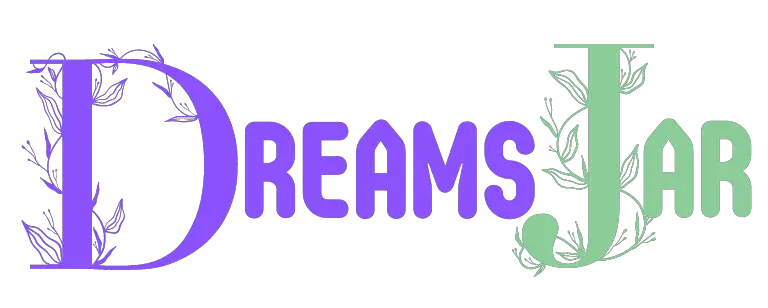What Is the Meaning of I Have a Dream? Social Justice!
“I Have a Dream” is Dr. Martin Luther King Jr.’s iconic speech advocating for racial equality and civil rights in the United States.
Delivered in 1963, it emphasized a vision of a future where African Americans won’t be judged by their color but by their character.
The speech served as inspiration for the Civil Rights Movement.
Through the powerful speeches like “I Have a Dream,” Dr. King inspired millions to fight against racial segregation and discrimination.
His message of non-violence and love pushed for progressive change, which ultimately led to the passing of the Civil Rights Act in 1964 and the Voting Rights Act in 1965.
8 Section Of the Meaning of I Have a Dream
| Section | Description |
|---|---|
| Speech Title | I Have a Dream |
| Author | Martin Luther King Jr. |
| Date | August 28, 1963 |
| Location | Lincoln Memorial, Washington D.C. |
| Context | March on Washington for Jobs and Freedom |
| Main Themes | Racial Equality, Civil Rights, American Dream |
| Key Message | The speech calls for an end to racism in the United States and envisions a future where all people, regardless of their race, live together in harmony and are judged by the content of their character, not the color of their skin. |
| Lasting Impact | The speech is considered one of the most significant and influential speeches in American history, contributing to the advancement of civil rights and inspiring generations to continue the fight for equality. |
Key Takeaway

Five Facts About: Meaning of I Have a Dream
How It Inspires Hope, Perseverance, And Advocacy For Justice
Martin luther king jr. ‘s iconic “i have a dream” speech continues to resonate with audiences around the world, inspiring hope, perseverance, and advocacy for justice.
Through his powerful words and vision, king emphasized the importance of equality, unity, and the fight against racial discrimination.
Here are the key points that highlight the significance of this speech:
A Vision Of Hope:
- King’s speech paints a vivid picture of a future where people are judged not by the color of their skin, but by the content of their character. This vision gives hope to those who faced oppression and discrimination, instilling a belief that positive change is possible.
Perseverance In The Face Of Adversity:
- King’s words serve as a reminder to persevere in the face of adversity. He spoke of the struggles faced by the african american community and encouraged them to remain steadfast in their pursuit of justice and equality.
Empowerment And Activism:
- The “i have a dream” speech ignited a sense of empowerment within individuals, urging them to take action and fight against injustice. It inspired countless individuals to join the civil rights movement, advocating for equality and social change.
Unity And Solidarity:
- King’s speech emphasizes the need for unity and solidarity among all races. His call for people to come together and work towards a common goal resonated with individuals from diverse backgrounds, fostering a sense of community and collaboration.
Amplifying The Voices Of The Oppressed:
- Through his eloquence and passion, king gave a platform to the voices of the oppressed, shedding light on their struggles and aspirations. His speech highlighted the importance of listening to and understanding the experiences of marginalized communities.
Education And Awareness:
- The “i have a dream” speech acted as a catalyst for raising awareness about racial discrimination and inequality. It sparked conversations and encouraged individuals to educate themselves and others about these crucial issues.
Advocacy For Justice:
- King’s speech emphasized the importance of pursuing justice and equality, not just for the african american community but for all marginalized and oppressed groups. It served as a call to action for societal change and the dismantling of discriminatory systems.
The Enduring Power And Meaning Of Martin Luther King Jr.’S “I Have A Dream” Speech
Martin luther king jr. ‘s “i have a dream” speech remains an icon of hope, perseverance, and advocacy for justice. Its enduring power lies in its ability to inspire individuals to fight for equality, unity, and the dismantling of discriminatory systems.
This historic speech continues to serve as a reminder of the importance of hope, solidarity, and the relentless pursuit of justice.
FAQ About Meaning of I Have a Dream
What is the meaning of the phrase “I Have a Dream”?
The phrase “I Have a Dream” is a reference to the famous speech given by Dr. Martin Luther King, Jr. on August 28th, 1963 in which he called for an end to racial segregation and racial injustice in the United States. The phrase has become widely known as a rallying cry for civil rights and social justice.
Who first spoke the phrase “I Have a Dream”?
The phrase “I Have a Dream” was first used in the famous speech delivered by Dr. Martin Luther King, Jr. on August 28th, 1963 at the March on Washington.
Are there other contexts in which the phrase “I Have a Dream” is used?
The phrase “I Have a Dream” is used in a variety of contexts, often in reference to the hopes and aspirations of people in various social and political movements. It is also used to refer to inspirational visions and goals that people have for the future.
How has the phrase “I Have a Dream” become an important part of the legacy of Dr. Martin Luther King, Jr.?
The phrase “I Have a Dream” has become an important part of Dr. Martin Luther King, Jr.’s legacy and is widely known as an important symbol of the civil rights movement in the United States.
Conclusion
In a world filled with challenges and obstacles, martin luther king jr. ‘s iconic speech, “i have a dream,” continues to resonate with people of all backgrounds.
This powerful message transcends time and reminds us of the importance of equality, justice, and unity.
Dr. king’s dream was one of a society where every individual is judged based on the content of their character, rather than the color of their skin.
It serves as a reminder that the fight for civil rights is ongoing, and we must continue to strive for a more inclusive and harmonious society.
By understanding the meaning behind “i have a dream,” we are encouraged to actively work towards realizing this vision.
Let us carry the spirit of dr. king’s dream with us as we work towards a future where every individual is granted the same opportunities and freedoms, regardless of their race or ethnicity.
Together, we can turn this dream into a reality.
Bonus Topic For-
Understanding the Meaning and Significance of Martin Luther King Jr.’s Famous Speech, “I Have a Dream”
Martin Luther King Jr.’s “I Have a Dream” speech, delivered on August 28, 1963, at the Lincoln Memorial in Washington D.C., is a powerful and iconic message that emphasizes the need for racial equality and civil rights in the United States.
The speech played a pivotal role in the American Civil Rights Movement, inspiring millions to stand up against racial discrimination and injustice.
At its core, the speech urges listeners to imagine a future where people of all races live together in harmony, with equal opportunities and rights.
- Racial equality and the end of segregation
- Civil rights for all
- Unity among different races
- Nonviolent protest and change
- Belief in the American Dream
“I have a dream that one day this nation will rise up and live out the true meaning of its creed: ‘We hold these truths to be self-evident, that all men are created equal.”
Martin Luther King Jr.
Exploring the Historical Context and Purpose of Martin Luther King Jr.’s “I Have a Dream” Speech
The historical context and purpose of Martin Luther King Jr.’s iconic “I Have a Dream” speech are rooted in the civil rights movement of the 1960s.
The speech was delivered on August 28, 1963, during the March on Washington for Jobs and Freedom, which aimed to bring attention to the systemic racial inequality and lack of economic opportunities for African Americans in the United States.
The meaning of the speech can be understood through several key points:
- The fight for equal rights and justice for African Americans
- The call for an end to racial segregation and discrimination
- A vision of a future where people of all races and backgrounds live in harmony
- A message of hope and resilience in the face of adversity
- An emphasis on nonviolent protest and peaceful demonstrations as the means to achieve change
Examining the Message Behind Martin Luther King Jr.’s 1963 Civil Rights Speech
Martin Luther King Jr.’s iconic “I Have a Dream” speech, delivered during the 1963 March on Washington for Jobs and Freedom, encapsulates the hope, passion, and determination of the civil rights movement.
The address aimed to convey the urgent need for a more equitable and just society in the United States, where African Americans had long faced systemic racism and discrimination.
By employing powerful imagery and invoking the principles of freedom and justice, King’s speech has become a symbol of the ongoing struggle for racial equality.
- Hope for a better future
- Call for racial justice
- Demand for an end to discrimination
- Emphasis on unity and solidarity
- Appeal to the principles of freedom and justice
Analyzing the Themes and Symbols of “I Have a Dream” by Martin Luther King Jr.
In Martin Luther King Jr.’s “I Have a Dream” speech, several themes and symbols convey the essence of his message, which seeks to promote racial equality and inspire change.
The predominant themes of this speech focus on the struggles faced by African Americans, the American Dream, and the imperative for racial harmony.
Additionally, some of the most significant symbols used by King include the Lincoln Memorial, the Emancipation Proclamation, and the “dream” metaphor. These elements work together to create a powerful and timeless message that continues to resonate with many today.
Key Themes:
- Struggle for racial equality
- The American Dream
- Unity and harmony
Important Symbols:
- Lincoln Memorial
- Emancipation Proclamation
- Dream metaphor
Understanding the Impact of Martin Luther King Jr.’s “I Have a Dream” Speech On Society
The “I Have a Dream” speech by Martin Luther King Jr. played a pivotal role in the civil rights movement in the United States.
Delivered during the March on Washington on August 28, 1963, the speech electrified the nation and inspired millions to support the cause of racial equality.
The powerful message communicated the urgent need for addressing racial segregation and discrimination that had been a pressing issue in the United States for centuries.
The impact of the speech has forever laid the groundwork for civil rights reforms that would eventually come to fruition in the form of the Civil Rights Act of 1964 and the Voting Rights Act of 1965.
- Highlights of the speech:
- The call for an end to racism in America
- The dream of a racially integrated society
- The importance of nonviolent protest in achieving change
What Did Martin Luther King Jr. Mean When He Said “I Have a Dream” in His Iconic Speech?
When Martin Luther King Jr. said, “I have a dream” in his iconic speech, he was expressing his vision for a future where people of all races, ethnicities, and backgrounds are treated equally and fairly.
He envisioned a world where the color of one’s skin would not determine their opportunities or the way they are treated by others.
The phrase “I have a dream” has since come to symbolize King’s unwavering commitment to civil rights and his desire for a more just and equal society.
TL;DR:
Martin Luther King Jr.’s “I Have a Dream” speech called for an end to racial inequality and continues to inspire individuals fighting for civil rights today through his use of powerful symbols and themes.
Remembering the importance of his message can help us work towards a more just and equitable society.
Action List:
- Educate yourself on the history of the civil rights movement and the significance of Martin Luther King Jr.’s “I Have a Dream” speech
- Reflect on the ways in which racial inequality still exists in our society today
- Consider ways to become involved in the fight for civil rights and social justice in your community
- Remember the power of dreaming big and envisioning a brighter future for all.
What was the meaning behind I Have a Dream?
Martin Luther King Jr’s “I Have a Dream” speech is one of the most memorable and influential speeches of the 20th century.
It was delivered on August 28, 1963, during the March on Washington for Jobs and Freedom.
The speech was a call for racial equality and an end to racial discrimination in the United States. The central message of the speech was the belief that all people, regardless of their race, should be treated equally and with dignity.
The speech was powerful and inspiring, and it helped to galvanize the Civil Rights Movement. Today, it is celebrated as a landmark moment in American history.
- The “I Have a Dream” speech is one of the most famous and influential speeches of the 20th century.
- It was delivered by Martin Luther King Jr. during the March on Washington for Jobs and Freedom in 1963.
- The speech was a call for racial equality and an end to racial discrimination in the United States.
- The central message of the speech was the belief that all people, regardless of their race, should be treated equally and with dignity.
- The speech helped to galvanize the Civil Rights Movement and is celebrated as an important moment in American history.
Interesting Fact: The original text of the speech did not include the famous “I Have a Dream” phrase. King improvised the line while he was speaking.
What did Martin Luther mean by I Have a Dream?
Martin Luther King Jr. delivered his iconic “I Have a Dream” speech on August 28, 1963, during the March on Washington for Jobs and Freedom.
The speech is recognized as one of the most significant moments in the civil rights movement and is a testament to King’s inspiring leadership.
When King repeated the phrase “I have a dream” throughout the speech, he meant that he believed in a future where racial equality and justice for all would be a reality.
He envisioned a world where black and white individuals could live and work together peacefully, unencumbered by discrimination and racism.
King’s message of hope and his pursuit of racial equality continues to resonate today, inspiring people of all backgrounds to work toward a better future.
5 Key Ideas from “I Have a Dream”
- King wanted an end to all types of racial segregation, injustice, and discrimination
- He aspired to create a society where individuals’ character is valued over their skin color
- King believed in using nonviolence and peaceful protest as means of driving change
- He hoped that his children would one day live in a world where they would not be judged by the color of their skin
- King believed that all individuals, regardless of race or background, should have equal opportunities for education and employment.
Martin Luther King Jr was not initially going to give his “I Have a Dream” speech. When he began his address, he had planned to remain focused on the issue at hand – the demand for equality for blacks in America.
However, the late Mahalia Jackson, a gospel singer who was passionate about the civil rights movement, called out to King from the crowd, “Tell them about the dream, Martin!” King then shifted gears and delivered the iconic lines that would go down in history.
What are the 3 main ideas in the I Have a Dream Speech?
The “I Have a Dream” speech is one of the most iconic speeches in history, delivered by civil rights activist Martin Luther King Jr. at the March on Washington for Jobs and Freedom in 1963.
The speech was an appeal to end racism and promote equality for all individuals, regardless of their race. King’s use of powerful metaphors and repetition created a timeless message that continues to inspire people today.
The three main ideas in the speech are:
- The acknowledgment of the harsh reality of racial inequality and segregation in America.
- The need for unity and solidarity among all people, regardless of race, to fight against discrimination.
- The vision of a future where individuals are judged not by the color of their skin but by the content of their character.
Let’s delve deeper into each of these main ideas and understand how they shaped this iconic speech.
- The I Have a Dream speech is considered one of the greatest speeches in American history.
- Martin Luther King Jr. initially wanted to leave out the “I Have a Dream” part of the speech, but it was added in on the day of the event.
- The speech played a pivotal role in the Civil Rights Act of 1964, which was signed just months after its delivery.
What does the poem I Have a Dream say?
The poem I Have a Dream is a profound speech given by the legendary civil rights leader, Martin Luther King Jr. on August 28, 1963.
Throughout history, this powerful poem has resonated with millions of people around the world because of its universal themes of freedom, equality, and justice.
The poem speaks to the heart and soul of every human being who longs for a better world. It is a call to action, a rallying cry for a united front against discrimination, prejudice, and inequality.
The poem reminds us of the importance of standing up for what is right, even when it may seem impossible.
- Despite being delivered over half a century ago, I Have a Dream remains one of the most iconic speeches of all time.
- The poem’s powerful language and imagery have the ability to inspire and invigorate people to this day.
- King’s words are a testament to the power of the human spirit and a reminder of the collective strength we possess.
- By sharing this poem, we honor Martin Luther King Jr.’s legacy and reaffirm our commitment to social justice and equality.






